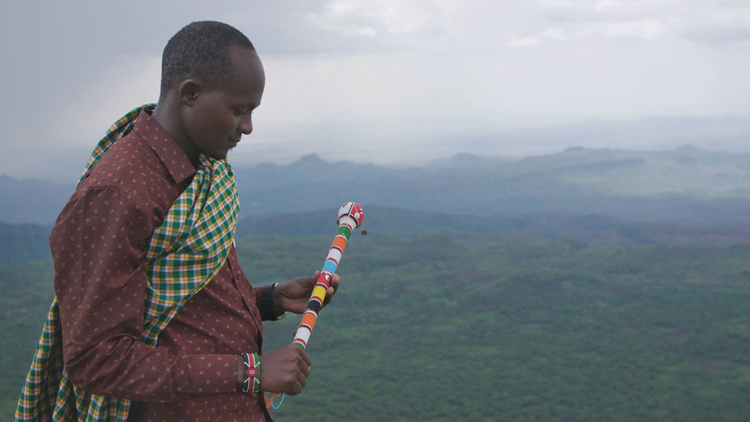Exploring themes of environmentalism, colonialism, and conservationism in “The Battle for Laikipia” edited with Premiere Pro

Premiering at this year’s Sundance Film Festival, “The Battle for Laikipia” is a compelling documentary that explores the unresolved historical injustices, climate change, and a generations-old conflict between Indigenous pastoralists and white landowners in Laikipia, Kenya. This film delicately navigates themes of environmentalism, colonialism, and conservationism, all infused with empathy, compassion, and truth.
Using Adobe Premiere Pro, editor Sam Soko breathed life into this powerful documentary, using its features to accelerate content review during post-production. Through Adobe’s comprehensive suite of tools, Soko was able to artistically capture the culture and nomadic lifestyle of the Samburu people, visually and emotionally.
“The Battle for Laikipia” premiered at Sundance on January 21. Read on below for a behind the scenes look into the making of this film.
How and where did you first learn to edit?
My editing journey began out of frustration with storytelling execution by others in my writing and directing projects. I started learning editing on my own, beginning with Adobe Creative Suite 4. This self-taught process, driven by the need to better convey my vision, has significantly shaped my editing approach, especially with Adobe Premiere Pro, despite learning other software later.
How do you begin a project/set up your workspace?
My project setup involves a meticulously organized workspace, focusing on neatly arranged timelines. Alongside my assistant editor Jordan, we’ve developed a system for efficiently handling footage. This system ensures smooth transitions across different stages, including translations, sequence creation, story editing, and onlining for color and sound. A well-organized project setup simplifies the entire editing process.
Tell us about a favorite scene or moment from this project and why it stands out to you.
My favorite moment in the film is the editing process that depicts the life of Simeon, one of the lead subjects, who is from the Samburu people. The Samburu are pastoralists. The challenge was to visually and emotionally portray their culture and nomadic lifestyle, which involved constant movement and community dynamics. Overcoming this challenge and effectively executing it in the film was both complex and rewarding.
What were some specific post-production challenges you faced that were unique to your project? How did you go about solving them?
The project faced unique post-production challenges, such as managing a vast amount of footage in various languages and coordinating with two directors based in different countries. To ensure efficient editing progress, we established a robust feedback loop and a system for sharing cuts and scenes, despite the logistical complexities and geographical separations.
What Adobe tools did you use on this project and why did you originally choose them? Were there any other third party tools that helped enhance your workflow?
For this project, I used Adobe Premiere Pro’s transcription tools and improved caption management features. They were excellent in speeding up content review. Although we did use a few other third-party tools, Adobe's offerings provided the necessary functionality for our workflow.
If you could share one tip about Premiere Pro, what would it be?
My top tip for using Premiere Pro is to maintain a well-arranged project and establish a systematic approach for adding new footage. This is particularly crucial for large projects involving translations and proxies, as it helps in managing complex workflows more effectively.
Who is your creative inspiration and why?
My creative inspiration comes from the lives and history of my people, from the African continent. Our depth of creativity and wealth of stories have greatly contributed and continue to contribute, in the journey of humanity. I’m also inspired by my creative family — they know themselves (hahaha), who constantly challenge me to explore new storytelling possibilities and to never settle for stagnation. This drive and encouragement have been invaluable to my growth
What’s the toughest thing you’ve had to face in your career and how did you overcome it? What advice do you have for aspiring filmmakers or content creators?
The biggest challenge in my career has been pursuing filmmaking at home. In Africa, art faces challenges from community support, resource limitations, and often tokenistic global perceptions. Despite these hurdles, African artists are making significant strides, often with limited resources and self-taught skills. Africa is rising. My advice to aspiring filmmakers and creators is to persistently pursue your art — even in challenging environments. Be consistent in delivering quality, demand greater support from governments and contribute to building a sustainable supportive community for artists.